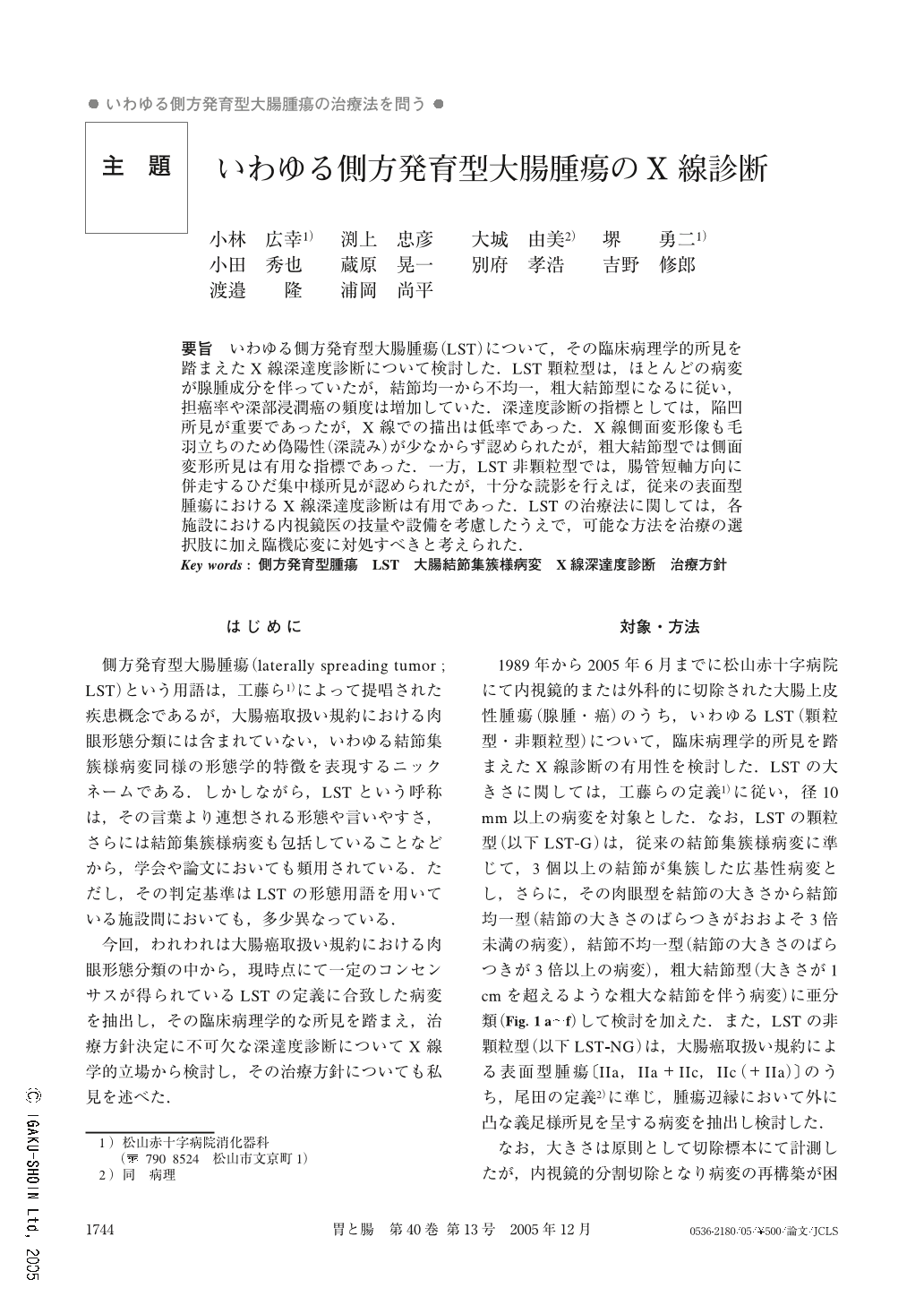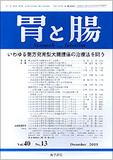Japanese
English
- 有料閲覧
- Abstract 文献概要
- 1ページ目 Look Inside
- 参考文献 Reference
- サイト内被引用 Cited by
要旨
いわゆる側方発育型大腸腫瘍(LST)について,その臨床病理学的所見を踏まえたX線深達度診断について検討した.LST顆粒型は,ほとんどの病変が腺腫成分を伴っていたが,結節均一から不均一,粗大結節型になるに従い,担癌率や深部浸潤癌の頻度は増加していた.深達度診断の指標としては,陥凹所見が重要であったが,X線での描出は低率であった.X線側面変形像も毛羽立ちのため偽陽性(深読み)が少なからず認められたが,粗大結節型では側面変形所見は有用な指標であった.一方,LST非顆粒型では,腸管短軸方向に併走するひだ集中様所見が認められたが,十分な読影を行えば,従来の表面型腫瘍におけるX線深達度診断は有用であった.LSTの治療法に関しては,各施設における内視鏡医の技量や設備を考慮したうえで,可能な方法を治療の選択肢に加え臨機応変に対処すべきと考えられた.
Based upon the clinicopathological findings, we analyzed radiographic clues for the diagnosis of the depth of invasion of laterally spreading tumors (LST) of the colon and rectum.
The majority of the LST granular type, which were classified on the basis of surface appearance into the following subtypes ; uniform nodular, mixed nodular and gross nodular type, had adenomatous components. However, the incidence of both carcinoma in the adenoma and invasive carcinoma was highest in the gross nodular type and higher in the mixed nodular type than in the uniform nodular type. The macroscopic findings of the surface depression was the most useful clue for diagnosis of the depth of invasion, but radiographic detection on the surface depression was hard compared with that by endoscopy. However, limited to the gross nodular type, radiographic deformities in the lateral view findings were useful for the diagnosis of the depth of invasion.
On the other hand, according to the radiographic evaluation of LST non-granular type, radiographic diagnosis of the depth of invasion, indicated formerly for superficial type of colorectal tumors, was also useful for the LST non-granular type.
As to the treatment of LST, we considered that it was important to take whatever measures the occasion demands such as endoscopic techniques, the use of medical instruments and other such things available in each hospital.

Copyright © 2005, Igaku-Shoin Ltd. All rights reserved.


